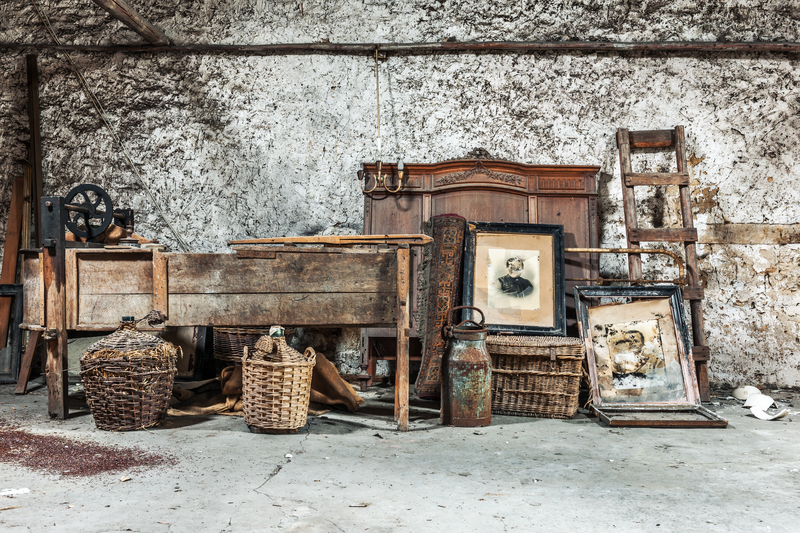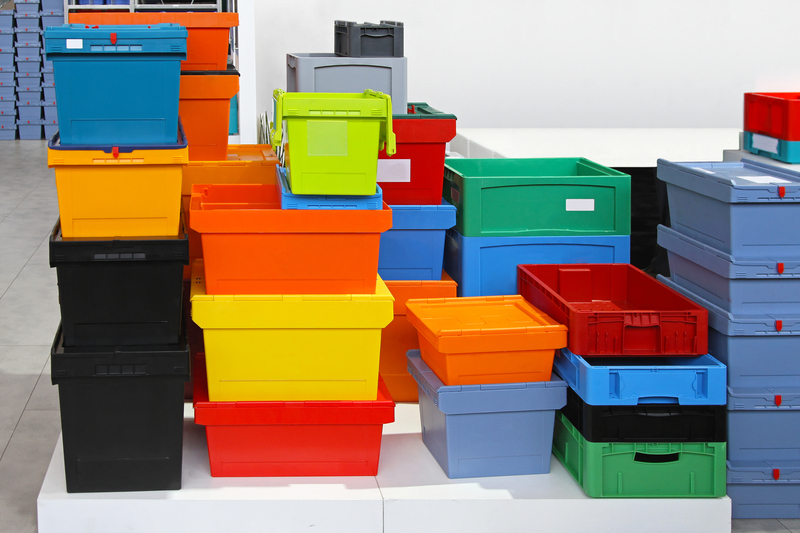Strategic Decluttering Tips for a Smoother Move
Posted on 22/05/2025
Strategic Decluttering Tips for a Smoother Move
Moving to a new home should be an exciting fresh start, not a stressful ordeal caused by piles of unwanted belongings and last-minute packing chaos. The secret? Strategic decluttering. Not only does it reduce anxiety, but it can also save money, streamline your packing, and set the stage for a harmonious life in your new space. This comprehensive guide covers the best strategic decluttering tips to guarantee an organized, stress-free, and cost-effective move.
Why Is Strategic Decluttering Essential for a Successful Move?
- Lower Moving Costs: Fewer items mean fewer boxes, reduced packing materials, and potentially decreased moving company fees.
- Streamlined Packing Process: Organizing possessions upfront makes packing and unpacking efficient and less time-consuming.
- Fresh Start: Shedding unnecessary belongings allows you to set new intentions and enjoy your new space clutter-free.
- Stress Reduction: A clear plan combined with an uncluttered space can lessen overwhelm before, during, and after your move.

1. Start Early: The Foundation of Strategic Decluttering
One of the best strategic decluttering tips for moving is to begin well ahead of your actual move date. Giving yourself sufficient time reduces pressure and improves decision-making.
- Begin at Least 6-8 Weeks in Advance: Create a decluttering timeline and stick to it. Tackle one room or category at a time.
- Set Mini-Goals: Break the task down into manageable chunks--such as closets, kitchen cabinets, or the garage--for easy progress and motivation.
2. Create Your Decluttering Checklist
Organisation is key to the strategic decluttering process. A comprehensive checklist helps you stay on track and ensures nothing is overlooked.
- Inventory Rooms: Document contents of each room to visualize the scope of your task.
- Categorize Items: Organize belongings into practical categories--Keep, Donate, Sell, Recycle, and Discard.
- Prioritize: Focus initial efforts on high-traffic rooms (kitchen, bedroom, living room) and work towards less-used spaces (attic, garage, storage).
3. Use the Four-Box Method for Decluttering Efficiency
The popular four-box method ensures you have a system for processing every single item. Label four containers as:
- Keep - Items you use regularly or have deep sentimental value.
- Donate - Gently used possessions someone else could benefit from.
- Sell - Things in good condition, valuable for a garage sale or online marketplace.
- Trash/Recycle - Items not usable or expired.
This simple framework removes indecision, keeps you focused, and guarantees every possession is thoughtfully considered.
4. Apply the "One-Year Rule"
If you haven't used an item in the past year, it's likely you won't use it in the future either. This is a powerful psychological tool for effective decluttering before moving:
- Clothing: Discard or donate garments that haven't left your closet in a year, except for seasonal or special-occasion pieces.
- Kitchen Gadgets: Getting rid of duplicates or single-use appliances saves significant packing space.
- Hobby Equipment: Be honest about equipment and craft materials you no longer use.
5. Digitize to Minimize Paper Clutter
Paper documents, old bills, manuals, and photos make up a surprising amount of moving weight. To cut costs and clutter:
- Scan Important Papers: Use a secure app or scanner to create digital backups of vital records, receipts, and sentimental documents.
- Shred and Recycle: Dispose of paper duplicates, obsolete records, and outdated manuals appropriately.
- Switch to Digital Subscriptions: If you still receive magazines or important mail, redirect to e-delivery for the future.
6. Get the Family Involved
Decluttering for a smooth move shouldn't fall on one person. Involve the whole family for faster results and fewer disagreements later.
- Give Everyone a Role: Assign children age-appropriate decluttering tasks and invite them to choose toys or clothes to donate.
- Hold a Family Sorting Session: Make it fun by playing music or offering small rewards for progress.
- Communicate: Discuss which items are worth keeping and why, encouraging everyone to be thoughtful about what goes to the new home.
Special Tips for Kids' Belongings
- Let children help choose which toys and clothes to keep, sell, or donate--giving them autonomy and reducing resistance.
- Frame the move as an opportunity to share with others, which can ease anxiety about parting with possessions.
7. Sell or Donate Unwanted Items - And Do It Early
Decluttering for a move generates unwanted items - but what you no longer need could be valuable to someone else. Act early to maximize benefits:
- Host a Garage Sale: Plan a weekend sale or participate in a community event.
- Use Online Marketplaces: List items on sites like Facebook Marketplace, Craigslist, or eBay well in advance of moving day.
- Donate to Charities: Research local non-profits that accept furniture, clothing, and household goods and schedule pickups ahead of time.
- Recycle Responsibly: Find recycling centers for electronics, textiles, and hazardous materials.
Remember: the longer you wait, the harder it is to find willing buyers or donation slots as moving day approaches.
8. Declutter Room by Room for Maximum Impact
Room-by-room decluttering simplifies the process and builds momentum:
- Bedroom: Start with clothing, shoes, and accessories. Purge dressers and nightstands.
- Kitchen: Eliminate expired foods, duplicate utensils, and unused gadgets. Keep only essentials.
- Living Room: Sort media, books, and electronics. Donate unread books and outdated DVDs.
- Bathroom: Discard expired medications, beauty products, and empty bottles.
- Garage/Basement: Separate tools, sporting equipment, and seasonal items. Donate, sell, or dispose as needed.
Finish each room before moving to the next for a clear sense of progress and satisfaction.
9. Use Up Consumables Before Packing
Consumables--pantry items, toiletries, cleaning supplies--are heavy and often not worth moving:
- Meal Plan: In the weeks before your move, craft meals around what you already have to reduce perishable and bulky pantry items.
- Share Extras: Offer unused non-perishables or unopened products to neighbors or local food banks.
- Proper Disposal: Safely dispose of cleaning supplies and hazardous materials if they cannot be transported.
10. Pack with Purpose: Label and Organize
Once you've decluttered, strategic packing comes next:
- Label Everything: Use detailed labels (room + contents) to avoid confusion during unpacking.
- Pack by Room and Category: Place similar items together to simplify set-up in your new home.
- Keep Essentials Accessible: Pack a first-night box with essentials like toiletries, basic kitchenware, and fresh clothes.
Labeling and intentional organization ensure a seamless move-in process.
Bonus: Reduce Decision Fatigue with a Strategic Mindset
Moving is filled with decisions. Here's how to guard your mental energy throughout the process:
- Follow a System: Using a set method (like the four-box technique) standardizes decisions.
- Set Daily or Weekly Decluttering Sessions: Regular, short sessions are more sustainable than marathons.
- Don't Revisit Old Decisions: Once you sort an item, move it on. Doubting leads to delays.
Common Mistakes to Avoid in the Decluttering Process
- Procrastination: Waiting until the last minute increases stress and reduces your options for sale or donation.
- Getting Sentimental: Holding onto everything because of memories makes true decluttering impossible. Remember: you're taking the memory, not just the object.
- Over-Packing: Avoid the temptation to pack everything just in case. Moving is a chance to reset!
- Underestimating Time: Start early and overestimate how much time each step will take to prevent a rushed experience.

Frequently Asked Questions on Moving and Decluttering
How early should I start decluttering before moving?
At least two months before moving day is ideal. Starting early allows for sorting, selling, donating, and proper disposal without stress.
Should I declutter before or after packing?
Always declutter before packing. You'll save on packing supplies and moving costs and reduce the labor needed during both packing and unpacking.
Can decluttering really save money on my move?
Yes! Moving companies often charge based on load weight or number of boxes. Fewer belongings mean a smaller, cheaper move and potential savings on storage units or additional trucks.
How do I deal with sentimental items when decluttering?
Keep only what is most meaningful and irreplaceable. Consider taking digital photos of keepsakes. Gift special items to loved ones or incorporate them into your new home's decor.
Conclusion: Embrace Strategic Decluttering for a Smooth, Stress-Free Move
Decluttering is more than a moving task; it's a powerful, positive transformation process. Adopting strategic decluttering for a smoother move gives you control, clarity, and confidence as you enter a new chapter. By starting early, following a thoughtful plan, and involving your family, you'll transform an overwhelming transition into a joyful, organized experience.
Remember: Every item you release is one less thing to carry, both physically and emotionally. Declutter smart, move with purpose, and start fresh in your new home!
- Begin Today: Even sorting one small drawer gets you started on the journey to an uncluttered move.
- Share the Load: Invite friends or family to your decluttering day for help and motivation.
- Enjoy the Results: A clutter-free move brings peace of mind, saves money, and sets a positive tone for your next chapter.
For more actionable advice on moving, organization, and home improvement, explore our related articles--all designed to help you master every move with ease!



